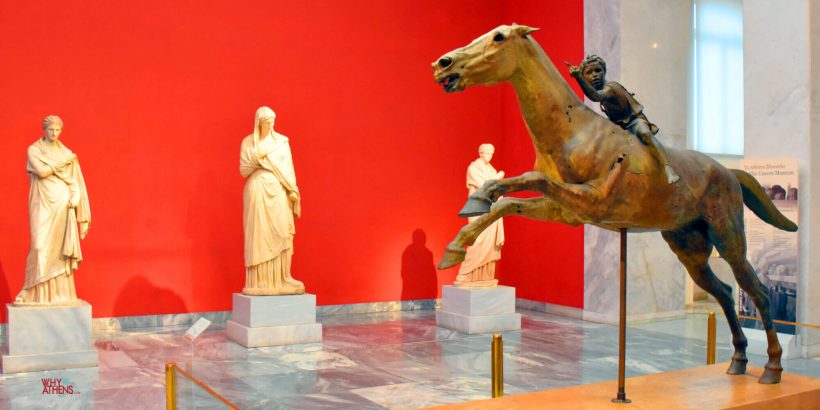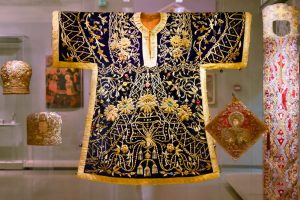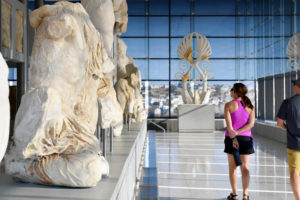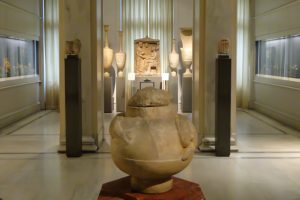The National Archaeological Museum is the largest museum in Greece with some of the greatest collections of antiquities in the world. The museum was established in 1829 to house and protect antiquities from all over Greece and has operated from its neo-classical home in Athens since 1889. There are over 11,000 exhibits dating as far back as the Neolithic period through to late Antiquity.
Seven of the must-see exhibits on your visit to the National Archaeological Museum in Athens
The Kore and Kouros
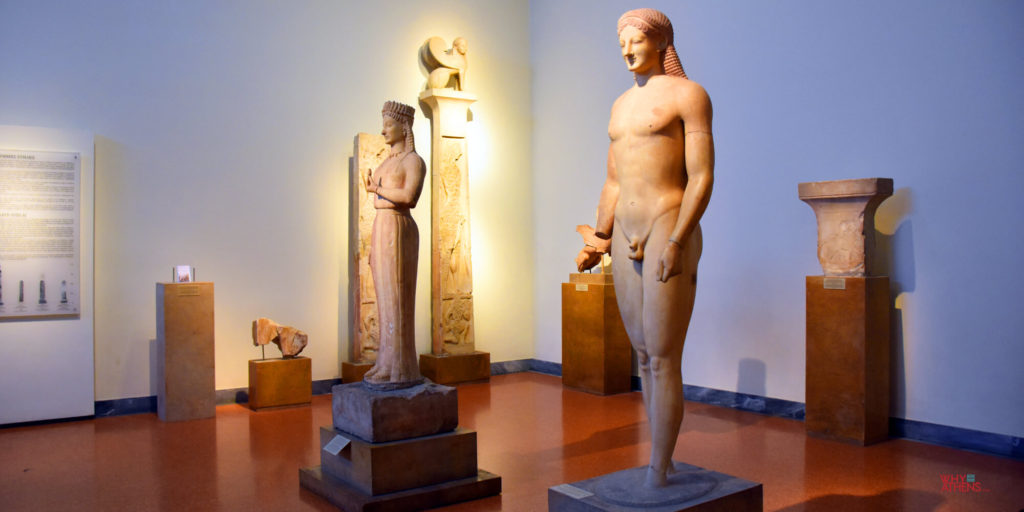
The National Archaeological Museum of Athens. Photograph: Why Athens
The Kore (young maiden) and Kouros (young male) were discovered in Mirenda, south-east of Athens in 1972, with the female Kore being fully preserved and considered one of the most important pieces of Archaic art in existence. Both statues were created by the sculptor Aristion of Paros around 550-540BC.
Skip the line and take an audio tour around the museum during your visit
Zeus or Poseidon
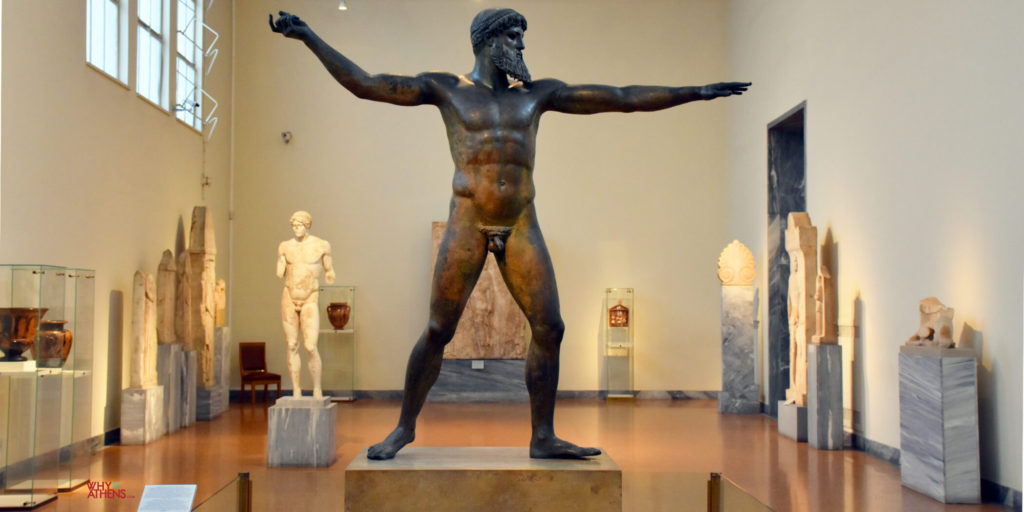
The National Archaeological Museum of Athens. Photograph: Why Athens
Zeus or Poseidon, the museum itself asks the same question as the experts can’t agree but the locals will tell you it is Zeus. Found in a shipwreck off the island of Euboea (Evia) the hollow cast bronze statue dates back to the early Classical period around 460BC and is one of the few original pieces in existence from this time.
Skip the line and take an audio tour around the museum during your visit
Epinetra of Aphrodite
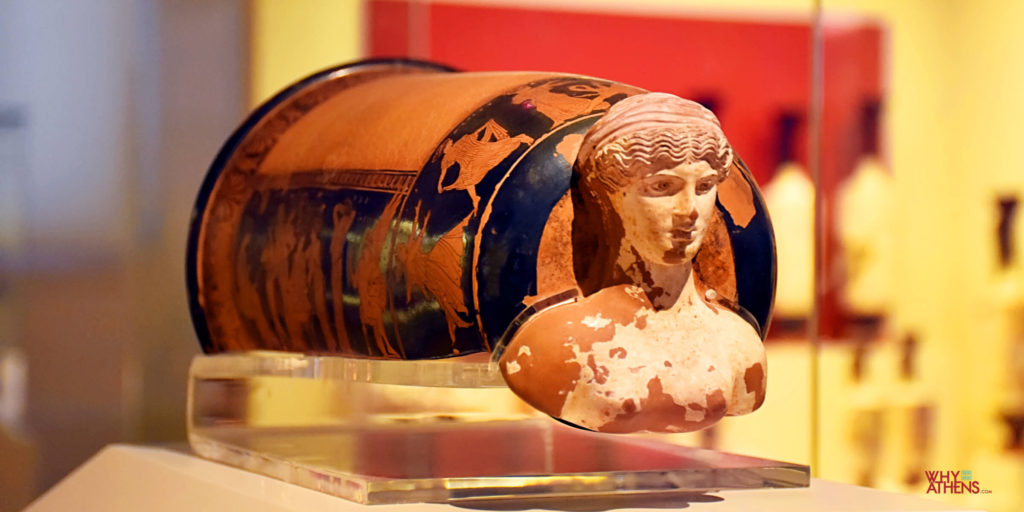
The National Archaeological Museum of Athens. Photograph: Why Athens
The museum has an extensive selection of ceramics on display. Known as an Epinetra, this example is crafted from clay as it most probably would have been presented as a wedding gift to a female. Most were made of wood and would fit to the thigh to be worn as a decoration. The bust of the woman is likely to be Aphrodite and dates back to 430-420BC.
The Antikythera Mechanism
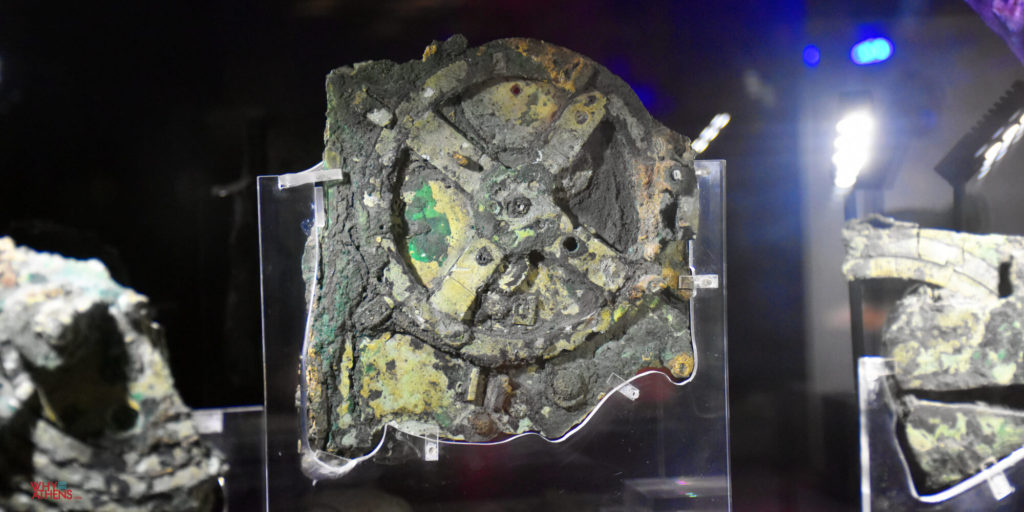
The National Archaeological Museum of Athens. Photograph: Why Athens
After spending 2,000 years under the sea, the Antikythera Mechanism was found by sponge divers off the coast of the island Antikythera in 1901. Thought to be the world’s first computer, modern radiography has exposed a complex system of over 30 mechanical gears and study continues as to its exact purpose. The mechanical science behind the device was lost at some stage around antiquity and it took until 14th century AD before any mechanical system was applied to an astronomical clock. The exhibition displays the various pieces the device was found in and ancient Greek text can clearly be seen with the human eye on some parts.
The Mask of Agamemnon
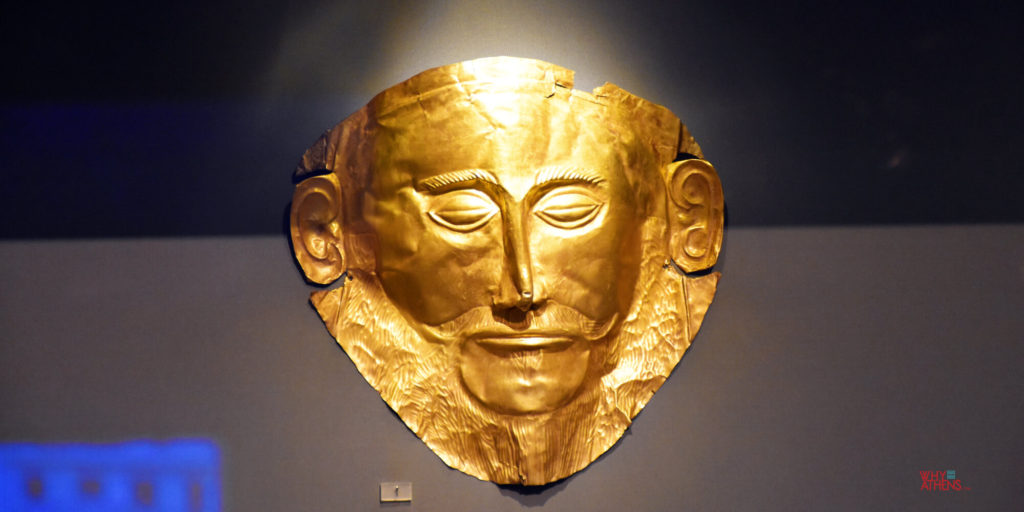
The National Archaeological Museum of Athens. Photograph: Why Athens
The gold death mask of Agamemnon is one of the most famous gold artefacts of the Greek bronze age. Scientists have dated the mask back to the 16th century BC and therefore pre-dating the life Agamemnon but it is still commonly referred to by this title. The mask is one of five discovered in Mycenae in 1876 and covered the face of an important person in death.
Take an audio tour around the museum during your visit
Tombs of the Kerameikos
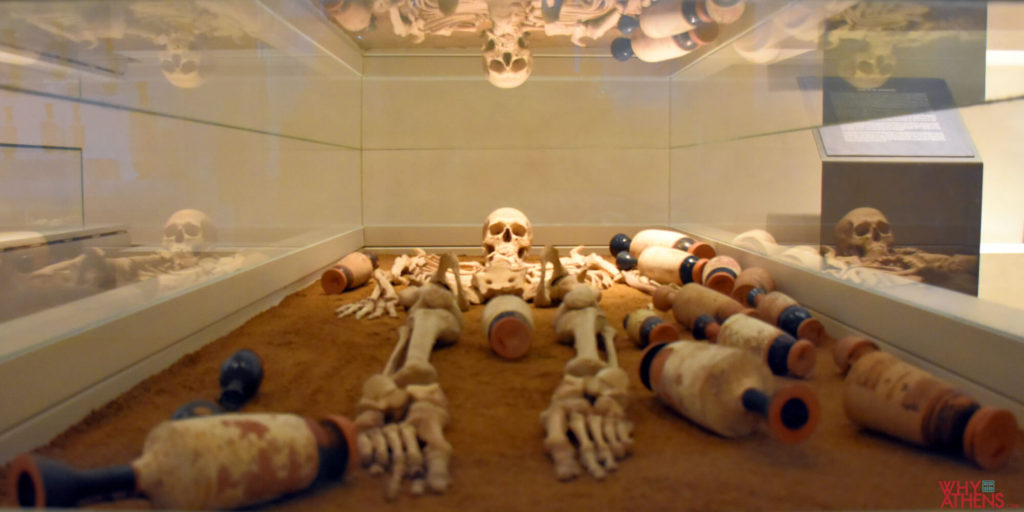
The National Archaeological Museum of Athens. Photograph: Why Athens
In 1891, excavation took place in the ancient cemetery of Kerameikos in central Athens. Two skeletons were found in an exceptionally fine state as their Sarcophagi were found covered in a layer of mud. This skeleton dates back to 460BC and was surrounded by 9 vases as grave offerings which was customary at the time in Classical Athens.
The Horse and Jockey
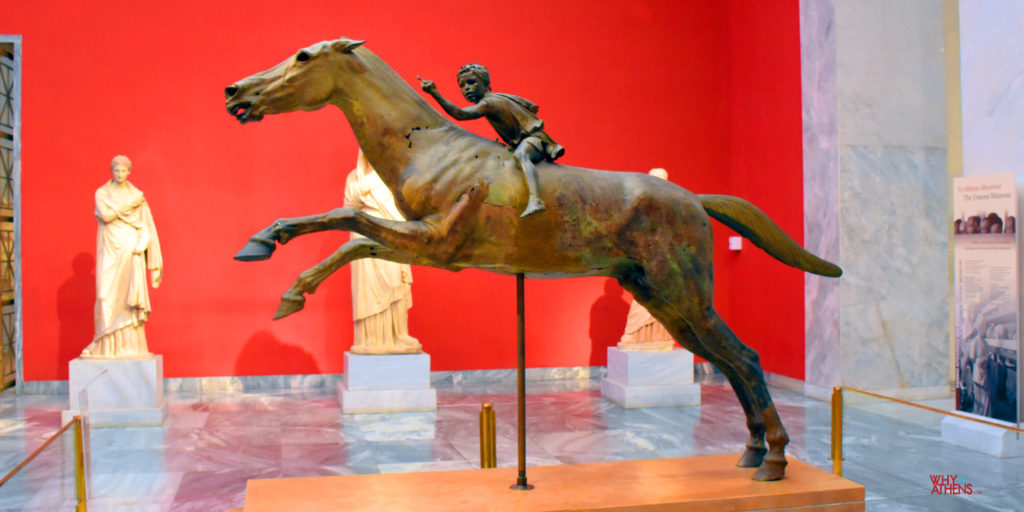
The National Archaeological Museum of Athens. Photograph: Why Athens
A centrepiece of the museum, this exceptionally preserved piece dates back to 140BC and was found in the same shipwreck as the statue of Zeus off the island of Euboea (Evia). Bronze items did not survive through history as most were melted down for their raw materials but even more rare is a sculpture depicting a racing horse from ancient Greece. The branded image of the goddess Nike is visible on the horse’s right thigh and the statue is virtually life size at 2.9 metres long and 2.1 metres high.
The museum is one of the few open 7 days per week (with the exception of public holidays) and during the summer months opens from 8:00am to 8:00pm. Special ticket packages are available allowing you to see the Byzantine & Christian Museum, Numismatic Museum and Epigraphic Museum all for the one price.
You can find other great museums in Athens here.

